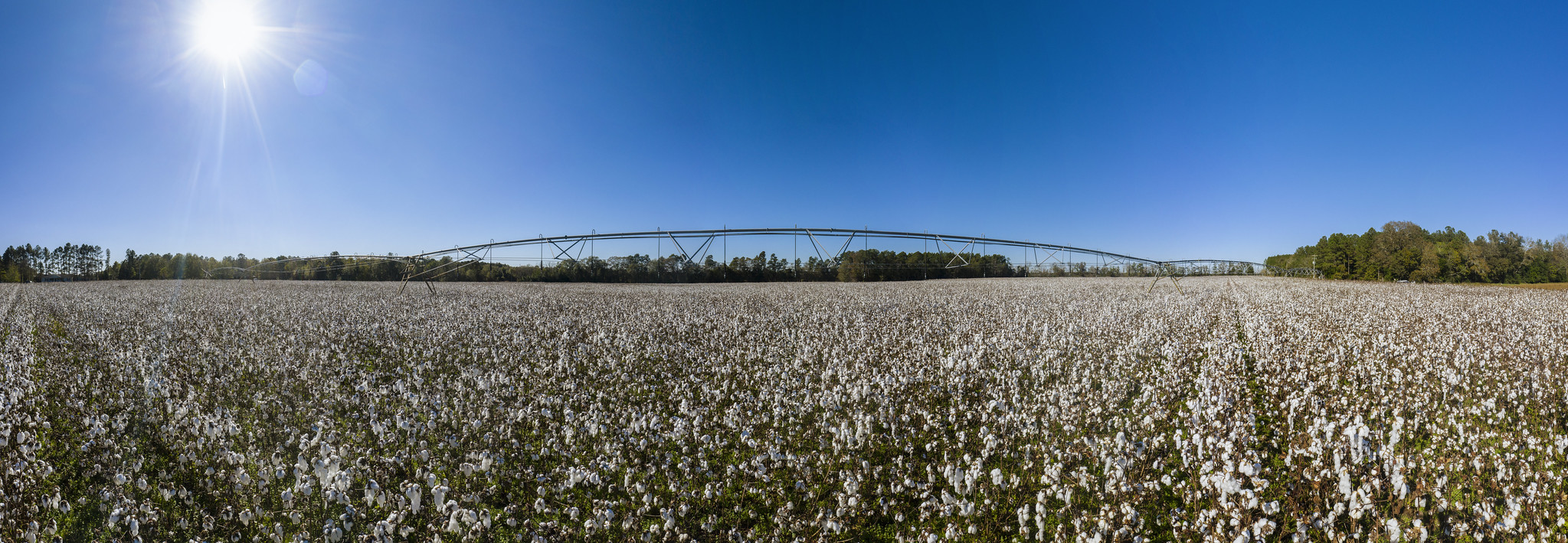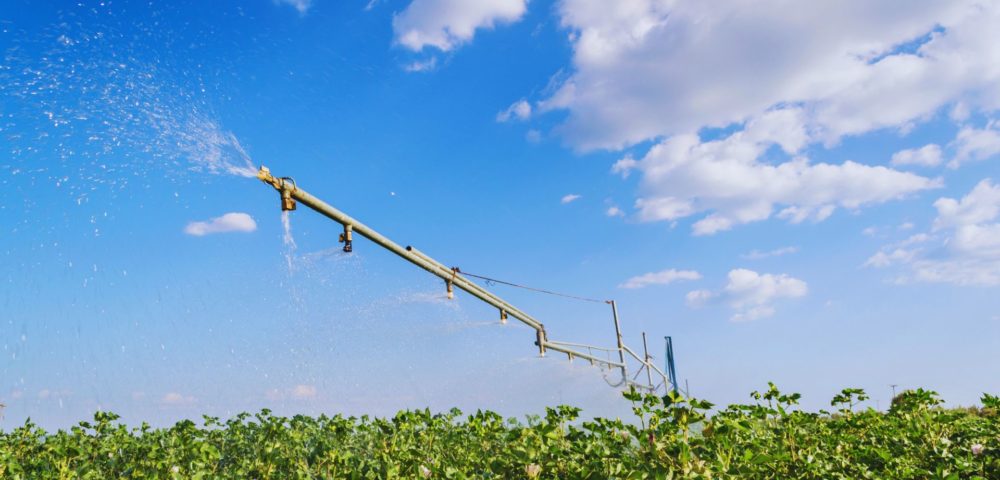 Interview with Dr Ed Barnes, Senior Director of Agricultural and Environmental Research at Cotton Incorporated, USA.
Interview with Dr Ed Barnes, Senior Director of Agricultural and Environmental Research at Cotton Incorporated, USA.
Water consumption in cotton production is one central aspect in the discussion on sustainability regarding the raw material. After the International Cotton Conference Bremen, the Bremen Cotton Report team consulted Dr Ed Barnes, Senior Director of Agricultural and Environmental Research at Cotton Incorporated, USA, and renowned expert in professional circles, on the matter. In the interview, Dr Barnes explains the essential aspects of the discussion on water.
Bremen Cotton Report: Why are there such different figures on the water consumption of cotton?
Ed Barnes: There are several reasons different water values are reported for cotton. One reason is old data that does not properly represent cotton’s current global water use. For example, many of the inflated figures cited on the internet can be traced back to a 1999 whitepaper that reported the water needed to produce a kilogram of cotton fiber ranged from 7,000 to 29,000 liters. The larger value was based on a study where the cotton yields were less than 100 kg per ha due to insect damage. Global average cotton yields have increased dramatically over the last 20 years from about 600 to over 750 kilograms per hectare without increased water use, so it is important to use recent data.
Another source of confusion is there are several ways to report water use and sometimes the terms are not used precisely. For example, some metrics include rainfall and some only include irrigation water, while other numbers maybe based on the water needed to produce a kilogram of seed cotton (fiber and seed) as opposed to only considering the fiber. My preferred metric is “blue water consumption” used in life cycle assessment (LCA) studies. That value represents the amount of irrigation water it takes to produce a kilogram of fiber from the field to a bale. From the LCA study Cotton Incorporated completed in 2015, a global estimate for cotton is 1560 liters of irrigation water per kilogram of fiber. That study used agricultural data from the U.S., China, India and Australia. (LCA report)
Is it true, does cotton need a lot of water?
So 1560 liters of irrigation water per kilogram may sound like a large value, but in reality that is typical of what many agricultural crops use. The total water used in a year by a cotton crop is less than the water used by a grass lawn. Furthermore, cotton only represents 3% of global agricultural water use (more details are discussed in a factsheet on water and cotton production).
Can you explain the “water colors” and to what extent are they helpful in assessing the water consumption of agricultural and other products?
Yes. Similar to the concept of a “carbon footprint”, the idea of a “water footprint” has been developed. The water footprint is a sum of green, blue and gray water consumption. “Green” water is essentially water that is derived from rainfall that fell on the field and is used by a crop. “Blue” water is any water pumped from an aquifer, river or lake to make a product. “Gray” water represents the amount of water that would be needed to dilute any pollution associated with the manufacturing of a product. Calculating blue and green water is pretty straight forward; however, determining gray water is much more complicated as it considers the quantity of water required to meet certain water quality standards and chemical fate and transport. Therefore, the “error bars” on gray water are much wider than for green and blue.
Note, the footprint is based only on water consumption (that is water that leaves a watershed and falls as rainfall somewhere else) and does not include water that is used and then returned to the same watershed. For example, water used by power plants to generate energy is quite high; however, that water will not contribute to a product’s water footprint as much of the water is use for cooling and is returned to the lake or river it came from. Thus, the use of a water footprint to compare a product made with agricultural inputs to one that does not, will not tell the whole water story. It is always important to remember that when water is applied to a field then evaporates, it does not degrade in quality or stop existing, that water will become rain at a different location in time that may be used to again grow another crop.

What are the differences in water use by organic and conventional cotton growing methods?
Differences in total water use by organic and conventional cottons will typically be small. For example, if you have a field of conventional cotton next to an organic one, the main factor impacting the total amount of water used by the crop will be the climate it is grown in and whether it is irrigated or not. In dry, hot areas, the total water use will be higher than the water used by the plant in a humid, cooler area. The increased water use is generally offset by the increased productivity of the plant as cotton is heat tolerant and benefits from the increased sunlight in arid regions.
Some have become confused by a LCA of organic cotton production where a majority of the farms included in the study did not use irrigation due to the fact there was sufficient rainfall most year to meet the crops needs. This resulted in a blue water consumption value that was much lower that the global average from the study conducted by Cotton Incorporated. But these differences were not related to the production system (organic or conventional), it is more reflective of the different climates represented in the two studies. For example, many areas of the U.S. also rely on rainfall (no irrigation) and therefore would have a blue water consumption value very close to 0 despite what production practices were used.
What role does soil health play in water uptake and are there differences here between different cultivation methods?
Soil health can play a large role in a cotton plant’s access to water, particularly in rainfed regions (areas where cotton is grown without any irrigation that represents about 50% of the world’s cotton). For many soil types, particularly sandy soils, increasing the amount of organic matter in the soil increases the ability of the soil to store water. For example, in a very sandy soil, a 2% increase in organic matter could double the water holding capacity of the soil. Organic matter can be increased by reducing tillage and growing winter cover crops when cotton is not present. The cover crops can both increase organic matter and reduce the chance rainfall will runoff the field. Not to say these practices can always be used. For example, in some non-irrigated regions, the winter rainfall stored in the soil is needed by the cotton crop and cannot be spared for a cover crop.
How is water supply connected to cotton yields and quality characteristics?
While cotton is more heat and drought tolerant than most crops, its productivity is still influenced by water stress. Water stress during fiber formation can also reduce fiber length and uniformity as it is the turgor pressure in the plant that allows the fiber to expand. So when there is a water supply that can be used responsibly, the use of irrigation water is a sustainable practice, as it minimizes the amount of land needed to produce a kilogram of cotton.
Thank you for the interview.
Bonus link – we just published a paper in 2020 that reviews what technologies have contributed to cotton’s increased productivity that is freely available at this link: https://cottoncultivated.cottoninc.com/wp-content/uploads/2020/12/Fourty-years-Cotton-Water-Online26Aug2020.pdf.
The interviews in the column “Question Time“ embody the opinion of the respective interview partner and do not represent the position of the Bremen Cotton Exchange as neutral, independent institution.

